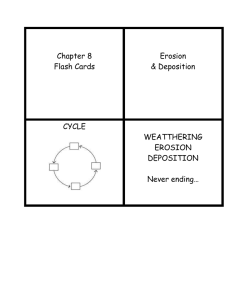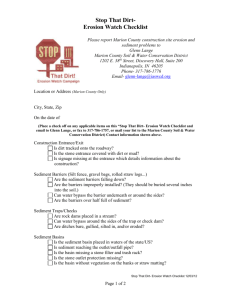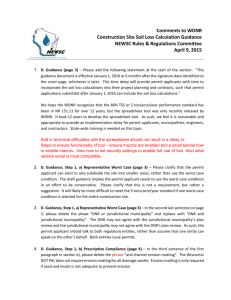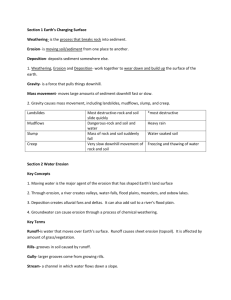GLY 456: ENVIRONMENTAL GEOLOGY – SPRING 2014
advertisement
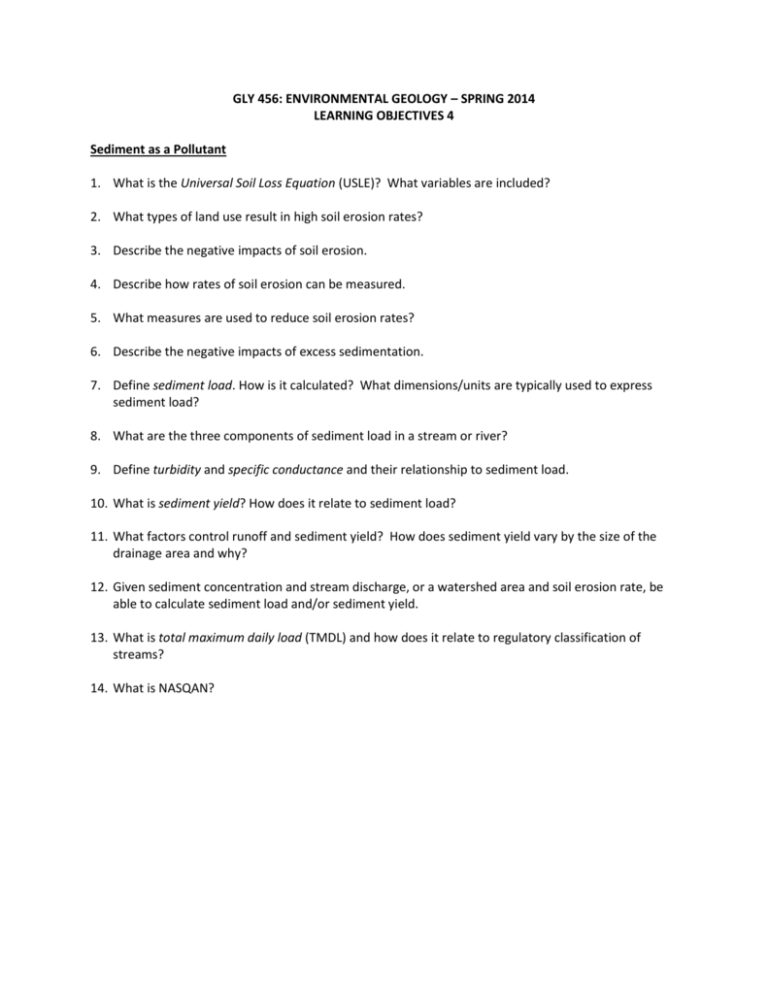
GLY 456: ENVIRONMENTAL GEOLOGY – SPRING 2014 LEARNING OBJECTIVES 4 Sediment as a Pollutant 1. What is the Universal Soil Loss Equation (USLE)? What variables are included? 2. What types of land use result in high soil erosion rates? 3. Describe the negative impacts of soil erosion. 4. Describe how rates of soil erosion can be measured. 5. What measures are used to reduce soil erosion rates? 6. Describe the negative impacts of excess sedimentation. 7. Define sediment load. How is it calculated? What dimensions/units are typically used to express sediment load? 8. What are the three components of sediment load in a stream or river? 9. Define turbidity and specific conductance and their relationship to sediment load. 10. What is sediment yield? How does it relate to sediment load? 11. What factors control runoff and sediment yield? How does sediment yield vary by the size of the drainage area and why? 12. Given sediment concentration and stream discharge, or a watershed area and soil erosion rate, be able to calculate sediment load and/or sediment yield. 13. What is total maximum daily load (TMDL) and how does it relate to regulatory classification of streams? 14. What is NASQAN?


